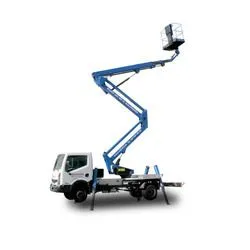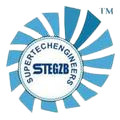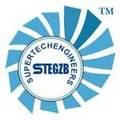Sky Lift Manufacturer

Sky Lift Manufacturer
A Sky Lift, also known as aerial lift, aerial platform, or sky lift, is a type of equipment designed to elevate workers, equipment, or materials to high or hard-to-reach places. It is commonly used in construction, maintenance, and various industrial applications.
In order to cater to the ever-changing requirements of clients, We Supertech Engineer are presenting a wide assortment of Sky Lift in the market. The offered products are widely used in various industries for different applications. Fabricated using the high-grade raw material, the lift is durable, high in performance and low in maintenance. It is available in various capacities and appreciated for the erection at enormous heights.
Benefits:
Increased Reach: Allows workers to access heights and areas that would be difficult or impossible to reach using ladders or scaffolding.
Efficiency: Speeds up tasks that require working at height, such as painting, repairs, and installation, by allowing for quick and easy repositioning.
Safety: Provides a safer alternative to ladders and scaffolding, reducing the risk of falls and accidents. The use of safety harnesses and stable platforms further enhances safety.
Versatility: Can be used in various applications including construction, maintenance, warehousing, and event setup.
Stability: Most sky lifts are designed with stabilizers or outriggers to ensure stability while elevated, making them safer and more reliable than ladders.
Considerations:
Maintenance: Regular maintenance is essential to keep the sky lift in safe operating condition. This includes checking hydraulic systems, electrical components, and structural integrity.
Training: Operators should be properly trained and certified to use the sky lift. Training covers safe operation, emergency procedures, and understanding of the equipment’s controls and features.
Space Requirements: Ensure that there is adequate space for the sky lift to operate, including room for the equipment to extend and maneuver.
Load Capacity: Be aware of the weight capacity of the sky lift, including both the platform and any materials or personnel being lifted. Overloading can compromise safety and stability.
Terrain: Consider the type of terrain where the sky lift will be used. Some models are designed for rough or uneven ground, while others are intended for smooth surfaces.
Weather Conditions: Weather can impact the safe operation of a sky lift. Wind, rain, or extreme temperatures can affect stability and functionality.
Applications:
Construction: Used for tasks such as installing windows, painting, and building maintenance. Ideal for accessing elevated areas during construction projects.
Maintenance: For routine maintenance tasks such as changing lights, repairing signage, and cleaning exterior surfaces.
Warehousing: Useful for accessing high storage racks and conducting inventory checks in warehouses.
Events: Often used for setting up stages, lighting, and decorations for events, providing a way to reach elevated areas safely.
Industrial: In manufacturing and industrial settings, sky lifts are used for maintenance, equipment installation, and inspecting machinery.

